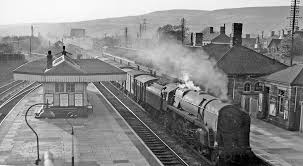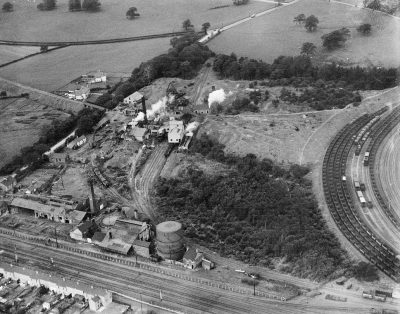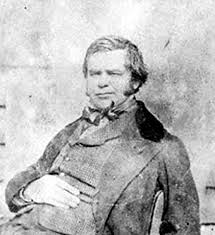The Industrial age
Up until the 19th Century the area around Pontyclun was rural, a few farms typically run by tenant farmers with rich absent landowners who collected their rents and left other things well alone.
In 1841-42 there were only 30 farms across the whole of the Pontyclun/Miskin area. Then the industrial revolution came to Pontyclun. It was already transforming the whole of South Wales and we were no exception.
For us the main driver of development was rail. Rail gave us connections to the outside world.
The coming of the Railway

The construction of the South Wales Railway led to the main line and a station was established at Pontyclun in 1850. The station was initially known as “Llantrisant for Cowbridge”
Later lines were added to Mwyndy, Tonyrefail and Cowbridge/Aberporth.
Over the years the station has had many railway companies including the South Wales Railway, Ely Valley railway, Llantrisant and Taff Vale Junction railway, The Cowbridge Railway, The Taff Vale Railway and ultimately the Great Western Railway, British Rail,Arriva Trains Wales and now Transport for Wales.
Prior to 1925 there were actually 2 stations which were merged in September of that year.
The station closed in 1964 being reopened in 1992 as Pontyclun station.
For more information about the history of the railways in Pontyclun you can visit this site
An industrial settlement

The Coedcae Colliery (first listed in 1856) and the Bute iron ore mine (which opened in October 1852) were the catalyst for the population growth. By 1871, the census returns record an influx of Cornish miners who had suffered from the collapse of the copper mining industry in Cornwall. This influx of english speakers effectively killed off the daily use in normal life of the Welsh language in this area at the time
The nearest large coal mines are detailed here
By 1870 the industries of the area had been expanded by the coming of the Ely Tin Plate Works (1872), The Llanttisant Pipe and Pottery Works (before 1890) a railway wagon works (in 1880s) and The Steam Joinery Company (before 1880). The needs of the workforce brought about the building of School Street and Llantrisant Road which were among some of the earliest houses in the area, along with the National School built in School Street, c. 1878.
The Bute and Windsor Hotels were built in the 1870s, a cinema – Studt’s, opened in 1913 (rebuilt in 1931 opening with “talkies”)
A large brewerey was based in Brynsadler and more information on the Crown brewery can be found here
Details and photographs of the tinworks are here
A History of Tinplate working in Pontyclun can be found here
High Street Brynsadler and the streets near to the station were developed between 1860 and 1980
Electricity first came to Pontyclun in 1920 with street lighting from 1925
Recent growth has been driven by modern housing developments leading to large population growth as people have moved from the valleys or out from Cardiff
The Clark’s of Talygarn

George Clark (1809-1889) was the Dowlais iron works manager who developed Talygarn house and occupied it from around 1880 till his death.
His son Godfrey Clark (1855-1918) was Chair of the Pontypridd improvement Board until the creation of the Llantrisant & Llantwit Fardre District Council in 1894 to which he was elected and became Chair.
Clarke bought Maesyfelin farm in 1907 and immediately began to shape 20th century Pontyclun. He developed the housing between Cerdin, Palalwyf and Llwynfen. He built the Pontyclun Athletic Club and made land available for Pontyclun schools.
His son Damien Clerk sold Talygarn house to the South Wales Miners Federation in 1924
The Bute family
The Bute family owned most of the land north of Pontyclun Railway Station along with large parts of the Rhondda and Cynon Valleys. As Coal mining contracted they sold on the land ownership in the 1930s.
As a result, much of the land was eventually acquired by the Land Development agency which is now part of the Welsh Government. Much of the recent commercial development on the Llantrisant and Coed Cae lane industrial parks as well as around Leekes and the Hendy is on land previously owned by the Butes